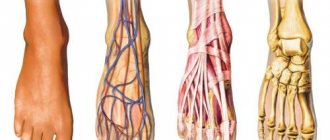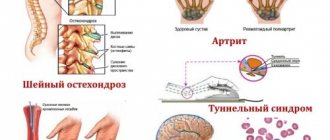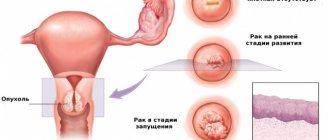General concept and types of bone cancer
Bone cancer occurs primarily in children, adolescents and young adults, and in rare cases in older people. The male half of the world's population is predisposed to the disease.
The bones that form the skeleton often become a target for metastases that spread malignant tumors localized in different organs and tissues. This type of bone cancer is secondary and occurs in most cases.
Primary cancer also develops in the bones - Ewing's sarcoma, osteosarcoma, which account for no more than 1.5% of cases. Such tumors develop in bone tissue and in most cases are localized in the knee joint:
- damage to the joints of the lower extremities - 80%;
- damage to the hip bones - 15%.
If the disease is detected at an early stage, survival prognosis is high, so it is necessary to take care of early diagnosis and arrange treatment for bone cancer abroad, where the latest highly effective treatment techniques are available.
Clinical picture
As a rule, from the moment the first symptoms of pelvic bone cancer appear, 6 to 12 months pass. The most common manifestation of the disease, occurring in almost 70% of cancer patients, is pain. At first they have low intensity and tend to disappear spontaneously. However, as the disease progresses, the symptoms of pelvic bone cancer, including pain, begin to grow and intensify, and become longer lasting. Many patients with this pathology often complain of pain at night. In addition, pain caused by bone cancer cannot be eliminated even with the help of strong analgesic drugs. Other symptoms of pelvic bone cancer include:
- Dull pain in the buttock and pelvis;
- Short-term increase in temperature;
- Increasing pain during physical activity;
- Swelling of the skin at the site of the tumor;
- Thinning of the skin in the affected area;
- Irradiation of pain to the groin, perineum and spine;
- Limitation of joint mobility.
In the later stages, painful swelling occurs at the site of tumor formation, where the skin may feel hot when touched. In some cases, the first symptom of pelvic bone cancer may be pathological fractures not associated with trauma or damage to the joints. In this case, the fracture is caused by instability of the bone structure, since as the tumor progresses, it loses its strength and elasticity.
Common types of bone cancer: Ewing's sarcoma
When Ewing's sarcoma develops, the bone skeleton is affected:
- lower parts of long tubular bones;
- spine;
- pelvic bones;
- collarbone;
- shoulder blade;
- ribs
This pathology is in second place among diseases occurring in children under five years of age and in adults over 30 years of age. Children aged 10-15 years are most often affected.
Finding out the reasons for the development of this disease, experts found that in 40% of cases the disease occurs against the background of injuries. The tumor goes through localized and metastatic stages of development. In the first case, a primary focus is formed, which spreads to adjacent soft tissues, but distant metastasis does not occur. The metastatic stage is accompanied by the spread of malignant cells to the liver, bone marrow, bones, central nervous system, and lungs.
Ewing's sarcoma is the most aggressive form of cancer; in 90% of cases, at the time the tumor is detected, patients have metastases in the bones, lungs and bone marrow. Only timely cancer treatment abroad offers a chance for positive treatment results for patients with Ewing's sarcoma.
Skeletal cancers and their causes
Unfortunately, the causes of primary malignant degeneration of bone and cartilage cells are still under investigation today. However, there is evidence that genetic inheritance plays a role in this case. In particular, genetic diseases such as Lie-Fauman and Rothmund-Thomson syndromes increase the risk of bone damage.
On the other hand, cancer can also develop under the influence of external factors. In approximately 40% of cases, cancerous lesions of the skeleton develop after injuries and bone fractures. Malignant degeneration is caused by exposure to radioactive radiation on the body, as well as poisoning by strontium and radium compounds. Some people develop cancer after a bone marrow transplant.
Common types of bone cancer: chondrosarcoma
The tumor is one of the common oncopathologies that arise in the bones of the skeleton and develop from cartilaginous tissue. Predominantly flat and tubular bones are affected.
A tumor can develop in different ways; accordingly, the success of combating this disease will depend on the characteristics of its development. For some chondrosarcomas, a favorable prognosis is possible. These are cases when the tumor grows slowly and metastasizes only at the last stage. Another option is the rapid development of the disease with early metastasis. Chondrosarcomas are treated surgically, and the prognosis will depend on the type of pathology and the ability to completely remove the tumor.
In most cases, chondrosarcoma is localized in:
- pelvic bones;
- shoulder girdle;
- thigh bones;
- ribs
About 60% of diagnosed cases are patients aged 40-60 years. But it is possible to develop the disease at a young age. It has been noticed that men get sick 2 times more often than women.
Chondrosarcoma is characterized by 3 degrees of malignancy. The higher the degree, the higher the risk of early metastasis and relapse after surgery to remove the tumor. With the last degree of malignancy, patients need treatment of bone metastases abroad, including advanced techniques and developments.
Types of bone cancer: osteogenic sarcoma
Osteogenic sarcoma is a tumor that develops in bone tissue, and malignant cells of this tumor produce such tissue.
The tumor can be of several types:
- sclerotic (osteoplastic);
- osteolytic;
- mixed
Pathology can develop rapidly and begin to metastasize early. The disease occurs at any age, but 65% of cases occur in the age group of 10-30 years. Mostly men are affected, most often during puberty.
The tumor develops predominantly in long tubular bones; flat or short bones are also affected. The lower extremities are affected 6 times more often than the upper extremities, 80% of cases are tumors in the knee joint.
Also, the tumor is often localized in:
- thigh;
- tibia;
- humerus and ulna;
- pelvic bone;
- shoulder girdle.
Damage to the skull is typical for children, as well as for the elderly
There is an opinion among experts that the tumor can develop against the background of rapid bone growth. Children who have been diagnosed with a tumor are significantly taller than the general age norm. Trauma is also considered a provoking factor for tumor development. Although experts note that it is during an X-ray examination of an injury that osteogenic sarcoma can be detected.
Diagnostics
Today everyone understands how dangerous bone cancer is. Symptoms of this disease do not always appear immediately. That is why it is necessary to undergo a full examination regularly, at least once a year. On the other hand, when primary clinical signs appear, you should immediately seek advice from a specialist.
First of all, the attending physician must collect a complete medical history of the individual patient. It happens that close relatives already had this diagnosis, which significantly increases the risk of developing the disease. A detailed description of all accompanying symptoms gives a complete picture of the disease and also allows it to be differentiated. Only after this can we proceed to a comprehensive examination of a problem such as bone cancer.
Diagnosis also involves fluoroscopy. If the tumor appeared relatively recently, the tumor may not be clearly visible on the image. Distinct outlines subsequently help determine the type of tumor (benign or malignant). In the second case, it develops much faster and is characterized by “ragged” edges and the absence of bone tissue around the perimeter.
Another important diagnostic method is computed tomography. It allows you to scan a cross section of the bone. Thanks to this method, a specialist has the opportunity to identify the number of neoplasms and their approximate sizes, as well as study the bone itself in detail.
MRI is another diagnostic modality that provides cross-sectional imaging. In this case, on the monitor screen, the doctor directly examines the soft tissues for infection, which cannot be done with a computed tomography scan. For example, leg bone cancer, the symptoms of which do not appear immediately, can be detected and its presence confirmed using MRI.
Scintigraphy is considered one of the most effective diagnostic methods. It involves the process of identifying areas of the most intense bone growth and restoration. Very often, scintigraphy is used to examine the entire body to detect possible changes in other bones.
Types of bone cancer: parosteal sarcoma
Parosteal sarcoma is a rare type of osteosarcoma and occurs in 4% of cases of the total number of identified osteosarcomas. The tumor affects the surface of the bone, develops slowly and is characterized by low malignancy. Oncology clinics in Israel are implementing effective treatment programs aimed at combating tumors of varying degrees of malignancy. In cases of mildly aggressive tumors, complete cure is possible in most cases.
Tumor localization options:
- knee joint area (posterior surface of the tibia or femur) - 70% of cases;
- scull;
- spine;
- pelvis;
- hand and foot;
- spatula
The consistency of the tumor is bone, the location is extraosseous, but there is a connection with the underlying bone and periosteum. In most cases, the tumor is surrounded by a capsule, but the risk of spread to adjacent muscle tissue cannot be excluded.
Benign and malignant bone tumor: chordoma
It is believed that chondromas can be benign or malignant, although the benignity of such a tumor is a controversial issue. Characteristics such as slow development and rare cases of metastasis allow us to consider the neoplasm as benign. The cost of cancer treatment abroad for such a tumor will be significantly less than treatment of cancer pathology.
But the fact is that the tumor is localized in an area that predisposes to complications. In addition, after complete recovery, chordoma may reappear. Based on this information and the international classification of tumors, most experts classify chordoma as a malignant pathology.
The tumor is rare, occurring in 1% of cases. The basis for its development are the remains of the embryonic notochord. Most often, sacral lesions are diagnosed in men aged 40-60 years. In young people, chordoma affects the base of the skull.
The tumor can develop in the following forms:
- ordinary chordoma;
- chondroid chordoma;
- undifferentiated chordoma.
Chondroid chordoma is the least aggressive. The undifferentiated form of the tumor is the most aggressive and prone to spreading metastases.
If the shape of the tumor cannot be determined, then a diagnosis of chondrosarcoma is made. In this case, the prognosis will be more favorable, since this type of tumor responds well to radiation therapy.
In the case of chordoma, patients require surgery.
Treatment
When choosing a specific treatment method, a specialist takes into account several factors. This includes the type of tumor, its aggressiveness, as well as its size and location. The age of the patient plays an important role in resolving this issue.
Treatment of bone cancer today is possible with the help of surgery, chemotherapy, and radiation therapy. It is important to note that all of these methods are effective both individually and together.
The surgical method involves removing the entire tumor (amputation of part of the bone). In this case, it is highly undesirable to leave the affected areas, since the remaining malignant cells may continue to develop. During the operation, some of the nerves and tissue surrounding the bone are also removed. The amputated bone is restored using special bone cement or a metal implant.
Radiation therapy involves the destruction of cancer cells using x-rays. If the latter enter the body in small doses, then the side effect in this case is almost minimal, and the primary signs of bone cancer quickly stop.











